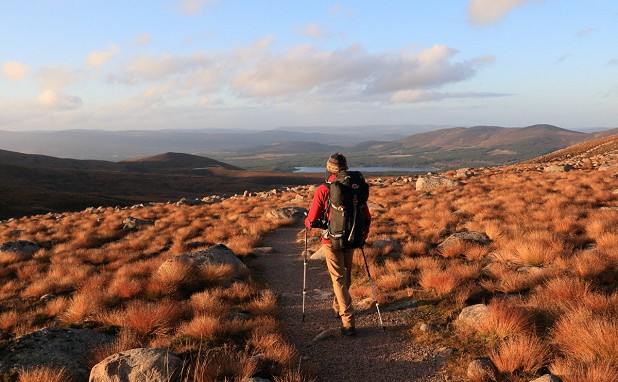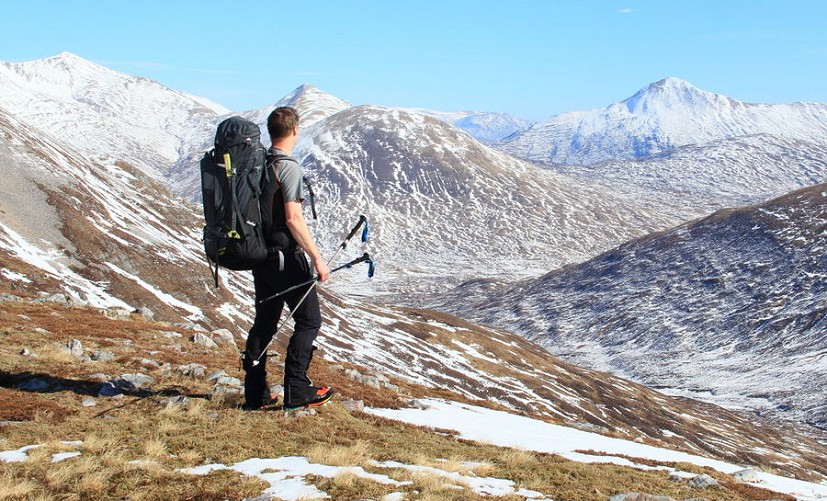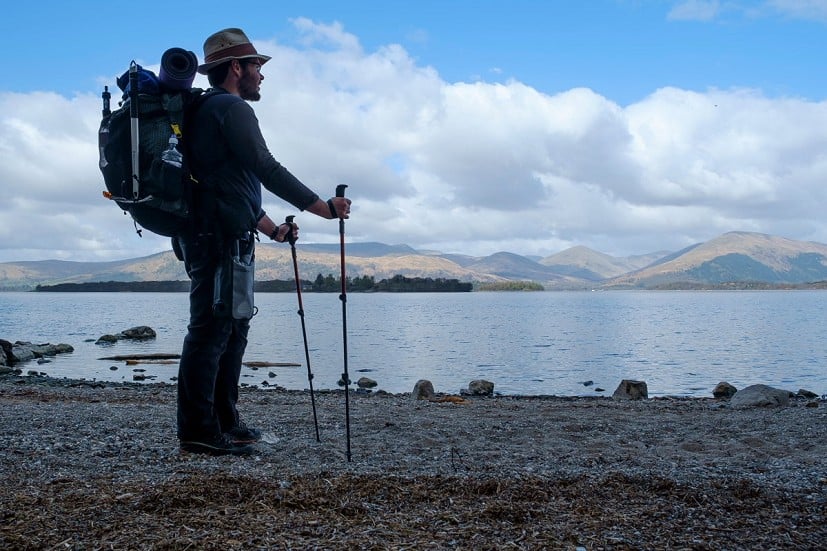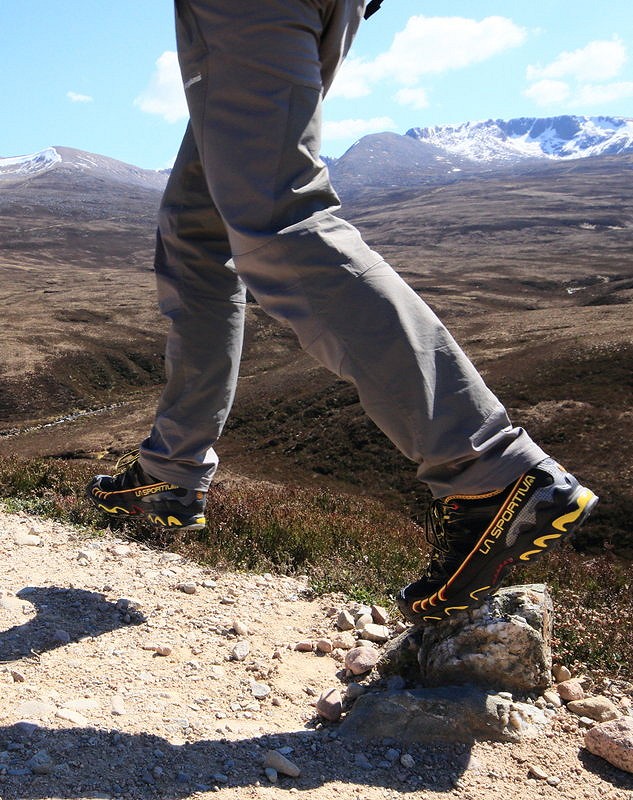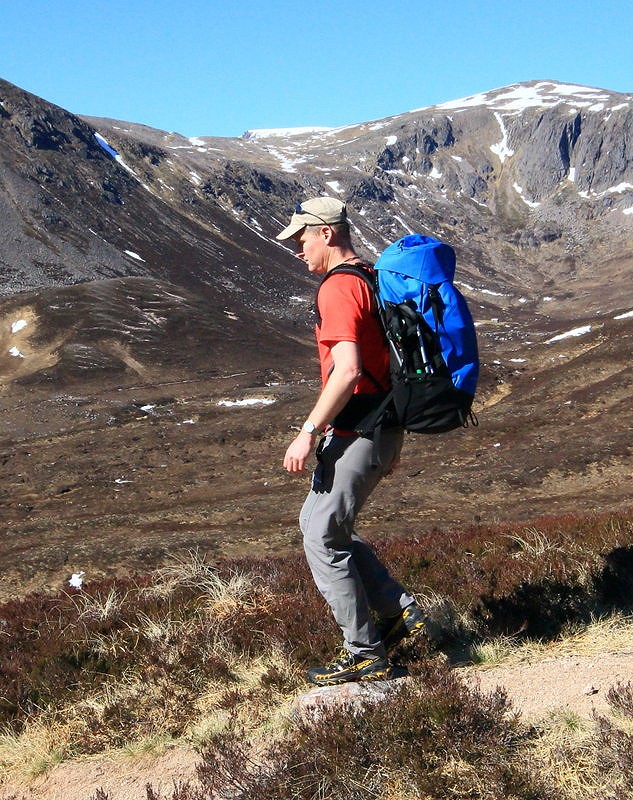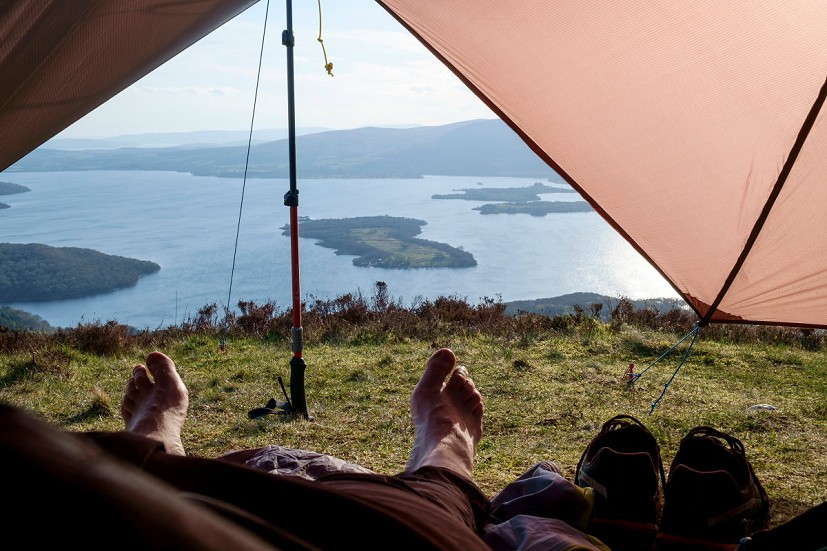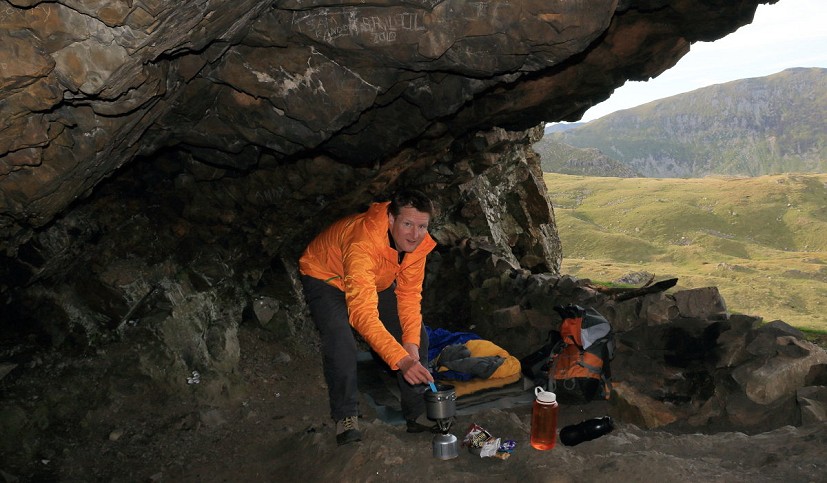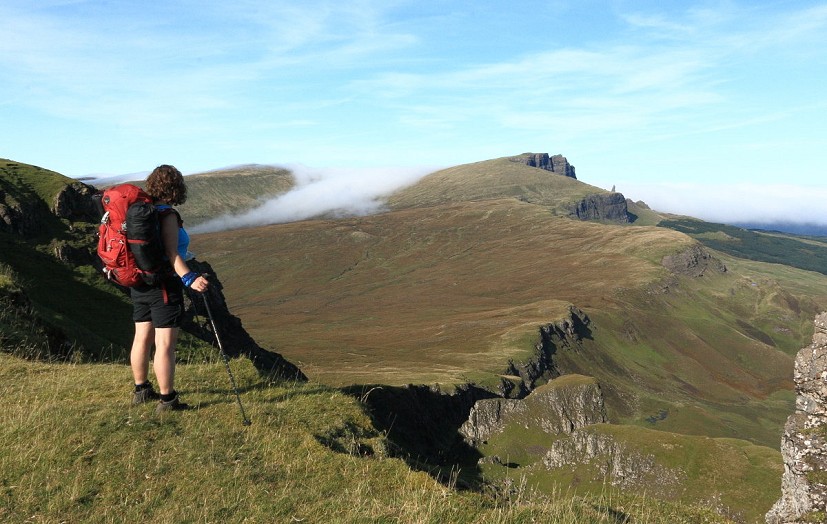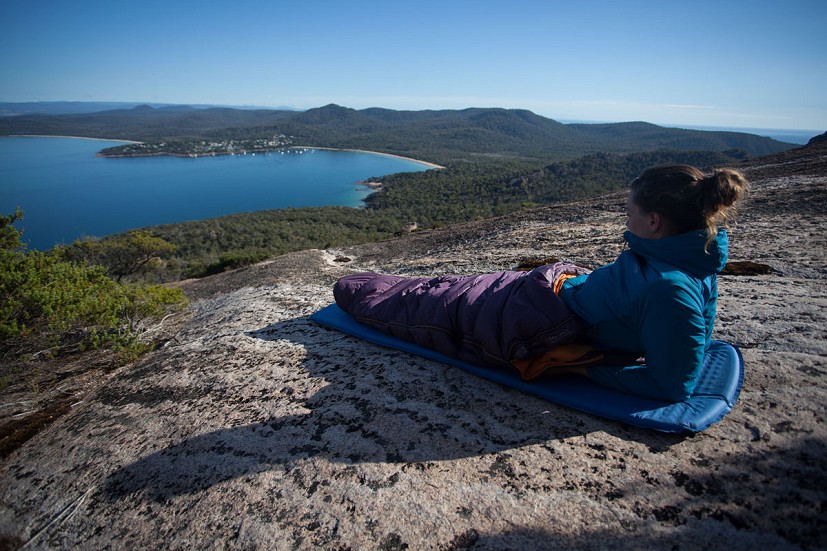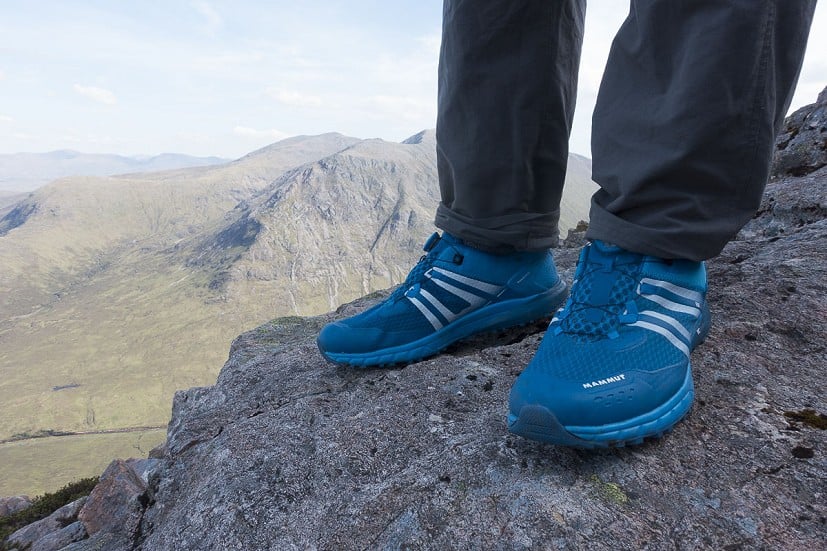Lightweight Backpacking for Beginners
Whether it's a one-nighter or a multi-week epic, a lighter pack makes for a happier walker. Shed the grams and you can go further and faster for longer - or alternatively just relax and enjoy the feeling of being unburdened. New featherweight kit helps, but going light is also about your mindset, explains backpacking minimalist Alex Roddie.
Ultralight. You've heard about it. You've been overtaken by backpackers wearing trainers and carrying tiny rucksacks. Maybe you've gazed longingly at ultralight kit in the shops but recoiled in horror at the price tag. Have no fear – I'm here to tell you that lightweight backpacking is no mysterious cult, and that you don't need to start a gear spreadsheet or saw your toothbrush in half to benefit from its teachings.
"Everyone who participates in overnight mountain adventures can benefit from reducing their pack weight"
Definitions
There are several different ways to measure pack weight, but to keep things simple we're talking about base weight in this article. Base weight is the total weight of all your gear, not including consumables such as food, water and stove fuel (as the weight of these items changes on a daily basis while on the trail).
So what is the difference between lightweight and ultralight?
- A 'lightweight backpacker' has a base weight of less than 9kg (20lbs).
- An 'ultralight backpacker' has a base weight of less than 5kg (10lbs).
- If you want to really go nuts, a 'super ultralight backpacker' carries around 2kg (less than 5lbs)… and even ultralight backpackers think these people are a bit crazy.
Of course, these labels don't really matter. But it can be helpful to give yourself a target to work towards.
Why bother?
Everyone who participates in overnight mountain adventures can benefit from reducing their pack weight. The weekend backpacker might find they have the energy to tick off one or two more summits, while the long-distance walker might open up new possibilities altogether – routes they'd previously considered beyond them could become feasible with a lighter pack. If you suffer from health problems such as arthritis, plantar fasciitis, shin splints, or even good old blisters, reducing weight carried will alleviate symptoms. Mountaineers and bikepackers can benefit from a lightweight approach too.
Before I began making the effort to trim pack weight two years ago, my outdoor aspirations were stuck in a rut. I'd fallen out of love with climbing, and although I often preferred multi-day hillwalking trips, the combination of heavy boots and heavy pack inevitably led to blisters, slow progress, and frustration. I aspired to do more ambitious long-distance routes, but something had to change.
When I actually weighed my pack, I realised I'd been hauling around a base weight of over 16kg – and that's in summer. In 2015 I cut my base weight down to around 9kg, and since then I've pushed below 8kg. I've switched from big boots to light, fast-draining trail shoes. These simple changes have enabled me to complete classic backpacking routes such as the Cape Wrath Trail, Tour of Monte Rosa, Skye Trail, and many more – routes that I might have suffered through with my old kit, but which became a pleasure with my new approach. I don't quite qualify as 'ultralight', unless you deduct the weight of my camera kit, but I'm certainly in the 'lightweight' bracket.
The trick is to cut weight without cutting into your enjoyment of being in the hills – or compromising safety.
Busting the myths
Lightweight backpacking is expensive
While it's true that replacing gear with ultralight alternatives can make a sizeable dent in your wallet, it isn't all about buying new stuff. In fact, one of the most effective things you can do is to leave items you don't actually need at home. That costs nothing.
Additionally, many ultralight items are simple and inexpensive. A closed-cell foam roll mat might only cost you £4.99, yet it's half the weight of a self-inflating mat (less comfortable too, but that's another discussion!). An empty drinks bottle is a lot cheaper and lighter than a dedicated 'outdoor'-branded water bottle or hydration pouch.
Lightweight gear is not durable
Most ultralight kit is surprisingly durable when cared for and used properly. I have yet to wear out a lightweight waterproof jacket, tarp shelter, rucksack or sleeping bag – all expensive items that I fully expect will continue to serve me for many years. I've been amazed at the durability of gossamer-thin ultralight fabric (which tends to be reinforced with a ripstop pattern).
Some gear is less durable. Lightweight mesh shoes wear out much more quickly than boots, and if you adopt this tactic then regular footwear replacement is unfortunately a fact of life. But it's by no means a foregone conclusion that your stuff will wear out more quickly if you take steps to reduce pack weight.
Lightweight backpacking is masochistic
While some ultralight backpackers take only the items they need to keep them alive and walking, it's quite possible to keep a base weight below 9kg while still packing plenty of comforts. Air mattress, down jacket, warm bed socks, a hip flask of whisky: these are all lightweight items that can improve your life on the trail.
That said, everyone brings stuff they don't actually need. For years I carried a drybag-style daysack inside my main pack, on the off chance I wanted to do a side trip with a smaller load. I never actually used it, but I didn't think anything of this – until I weighed it and found out I'd been carrying an extra 500g around for no reason.
Going lightweight certainly does not mean stripping out every single luxury. It's about figuring out what you really need, rather than just throwing everything into your pack just in case.
Lightweight backpacking is unsafe
This is where judgement and mountain sense come into play. Anyone can leave items at home in the name of a lighter pack; it requires experience to know whether it's safe to do so.
Some ultralight blogs advocate tactics such as leaving waterproofs at home or completely replacing your map and compass with an app. Clearly, this is rarely going to be sensible in the British hills, and you should think very carefully before leaving essential safety items at home. Long-distance adventurer Andy Skurka coined the phrase 'stupid light', referring to ultralight choices that sound acceptable but which lead to compromised safety or enjoyment in the field.
If you carry equipment appropriate for the terrain and expected conditions – and that equipment can be ultralight – then lightweight backpacking is no less safe than if you're carrying an 18kg load. The most important factor is the knowledge in your head, not the gear in your pack.
How to cut your pack weight
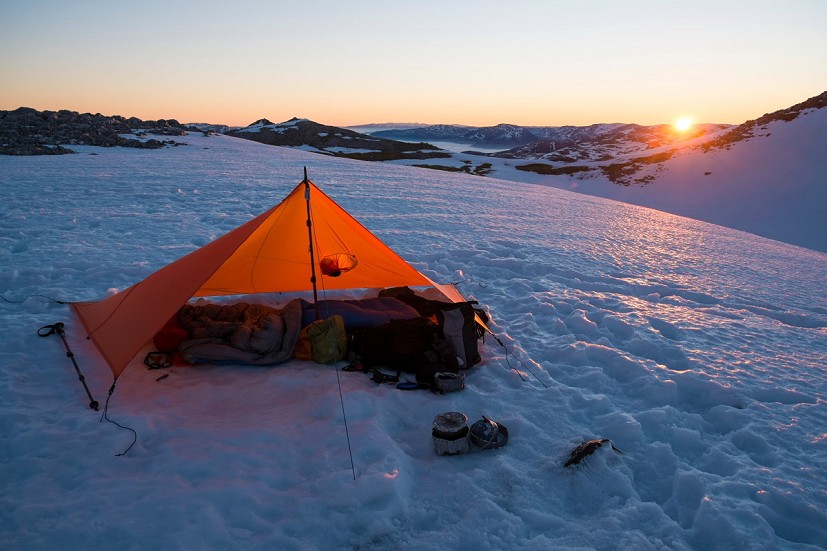
"Cut out the spare clothes. You tend to smell a bit after a while, but who cares when you're on a mountain?"
If you're still reading, hopefully I've convinced you that this isn't complete madness, and there might be some value in shedding a few kilos. But how to go about doing it? The key is to be methodical, know what you want to achieve, and don't try doing everything at once.
Have a plan
Before you set out on your next trip, weigh your rucksack (without food, water and fuel). This is your current base weight. It's probably heavier than you expected it would be, but knowing your starting point is key to making progress.
Decide what you want to achieve. You can probably cut a few kilos from your pack weight without purchasing any new kit. Those first couple of kilos are the easiest to trim; the more weight you cut, the more difficult it is to make further savings without spending a lot of money. So it's best to start with easy targets.
List the things you never or rarely use
Every time you return from a trip, note down the things you didn't use. Be thorough. Now is the time to really consider the utility of every item you carry, and if its function overlaps with another item, ask yourself why you need both. Sometimes overlapping functionality is justified; for example, I prefer to carry a dedicated GPS unit and camera in addition to my smartphone, even though my phone is capable of taking pictures and getting a GPS fix. I choose to do this because, for my specific needs, the dedicated gadgets do a better job.
But everyone's needs are different. The point of this exercise is to be aware of what your needs truly are. Reconsider what you think you know, forget your preconceptions, and don't keep doing something just because you've always done it that way.
To get you started, here are some potential items to ditch:
- Tent footprint. Your tent's groundsheet is probably durable and waterproof enough; there is rarely any genuine need to carry a footprint as well.
- Extra tent pegs. Take a single additional peg at most. A tip: tie loops of brightly coloured cord to your pegs to help prevent them getting lost.
- Plate and cutlery. You don't need them. Eat out of your (single, small) pan with a spoon or spork.
- Tent lantern. Extra illumination is handy in winter, but in summer just use your head torch.
- Spare clothes. I'm talking about the five pairs of socks, spare base layer and walking trousers you've been carrying around. They aren't necessary.
It's important to point out that some items you never use should not be removed, because they serve important emergency functions. For example, you shouldn't throw out your first-aid kit or whistle just because you never use them!
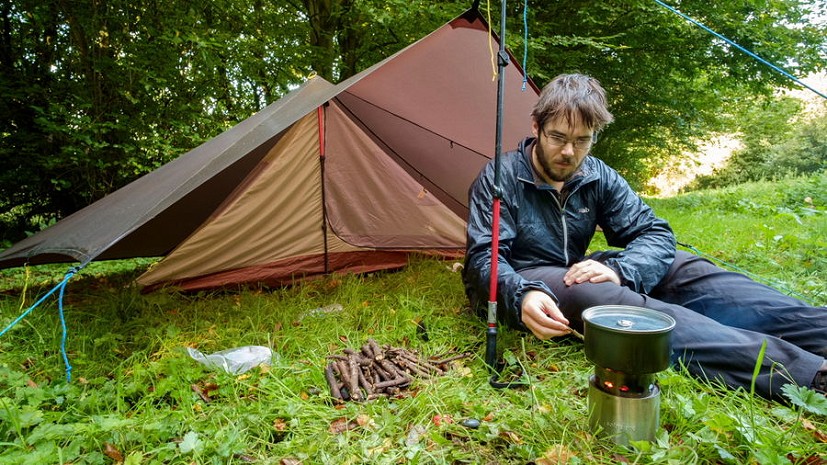
Consider luxuries you could do without
I'd never advocate leaving every luxury at home – backpacking is supposed to be fun! – but if you want to cut pack weight then at some point you will have to reduce the number of luxury items that you carry.
Some examples:
- Spare clothes – the ones you didn't ditch in the previous section. In addition to what I'm wearing, I only carry dedicated sleeping clothes (400g total for long johns and top), two extra pairs of socks, and insulation layers appropriate for the season. You tend to smell a bit after a while, but who cares when you're on a mountain?
- Spare footwear. Sometimes handy, but rarely necessary.
- Full gas/petrol stove setup. In winter, a beefy stove is required for melting snow, but in summer an ultralight alcohol burner or mini canister-top gas burner is more than sufficient. Gas gives a more controllable flame for cooking, while alcohol burners are far cheaper to run.
- Sleeping bag liner. If you have sleeping clothes, a sleeping bag liner is not required (although it can help to keep a down sleeping bag clean on a long trek).
- Pillow. Shove a fleece in your sleeping bag's stuff sack and call it a day.
- Extra stuff sacks or drybags. Keeping water out of your gear is important, but the lightest option is to use a waterproof rucksack liner in combination with a pack cover (plus maybe one extra drybag for your sleeping bag). Most other items can just be packed loosely in the liner. You'd be surprised how much weight all those extra drybags can add to your pack. I weighed mine in 2015 – I was carrying around 600g worth of drybags!
Don't pack your fears
It's easy to find yourself throwing stuff back into your pack if you're uncertain about visiting a new area, the conditions, or your own abilities. How many times have you added ice axe and crampons to your bag because you thought there might be a bit of snow left on part of your route?
Just-in-case items tend to mitigate against a perceived risk, so get into the habit of conducting informal risk assessments during the planning stage of each outing. Get as much information as possible, then consider the potential impact of the risk and how likely it is to affect you.
For example, if it's May in the Cairngorms and you're not sure whether to take ice axe and crampons, you need to take into account recent conditions, your planned route, and the possible consequences of crossing a snowfield without these items. Consequences are potentially severe (a dangerous fall) but the risk of it affecting you may be low (perhaps it's been a low-snow spring and snow patches are easily avoided). Maybe you decide not to take full winter gear but pack Microspikes and trekking poles as a lightweight compromise.
Personal experience and good mountain judgement are critical in making these decisions. Essential safety gear should always be packed if it is genuinely necessary.
Use this process for any planning decision where there are unknown factors, such as:
- Will it be cold enough to need winter sleeping bag and extra insulated clothing?
- Will I get devoured by midges?
- Are there dangerous river crossings?
Weigh your 'big three' items, and replace if necessary
In a typical backpacking load, the 'big three' items of shelter, sleeping bag and rucksack tend to contribute much of the weight. Get a scale and weigh them. As a rule of thumb, the lightweight backpacker should aim to keep the combined weight of these three items at roughly 3kg or below. This is where your original plan comes into play: if you only wanted to trim a kilo or two and have already achieved that through leaving behind redundant items, there's no need to replace anything… unless you're still carrying around a monstrous external-frame pack from the 70s, perhaps.
Most people should only consider spending money after they've been through all the steps above. But if you have made savings where you can, and your combined 'big three' weight is well over 3kg, then it's time to consider some new purchases. Packs, sleeping bags and shelters are expensive items, so choose wisely – but product reviews on UKHillwalking and in outdoor magazines are here to help you.
Many lightweight options are available from high-street brands these days. Here are a few examples.
Shelter
Rab Element 2 Tarp Shelter (660g); Alpkit Rig 7 Tarp (550g); Marmot Force 1P tent (1.1kg min); Exped Mira I HL tent (1.3kg min); Lightwave t10 Raid tent (1.45kg)
Packs
With a lighter load, you won't need as large a pack. 50-60l is usually big enough for the long-distance lightweight backpacker in the UK, while smaller packs in the region of 40l will be sufficient for shorter trips with summer gear.
Smaller packs: Arc'teryx Alpha FL 45 (665g); Crux AX40 (988g); Osprey Exos 38 (970g)
Larger packs: Lightwave Ultrahike 60 (1.25kg); Exped Thunder 70 (1.63kg)
Sleeping bags
Down has a superior warmth-to-weight ratio to synthetic, but is more expensive. A bag's temperature rating can be boosted by extra clothing layers or a warmer sleeping mat. The following lightweight down options are well suited to UK hill use in summer and bridge seasons:
Mountain Equipment Helium 250 (705g, 'good night's sleep temperature' 1˚ C); Marmot Hydrogen (708g, limit -1˚ C); Exped Ultralight 500 (740g, comfort 5˚ C); Rab Neutrino 400 (men's: 805g, 'Rab limit' -4˚ C / women's: 790g, 'Rab limit' -4˚ C); Alpkit SkyeHigh 500 (970g, comfort 1˚ C / limit -4˚ C); Lightwave Firelight 350 (620g, comfort 3˚ C / lower limit -2˚ C)
Next steps
If you've been through every step listed above, cutting further weight from your pack becomes more challenging – and you'll need to go a lot deeper down the rabbit hole!
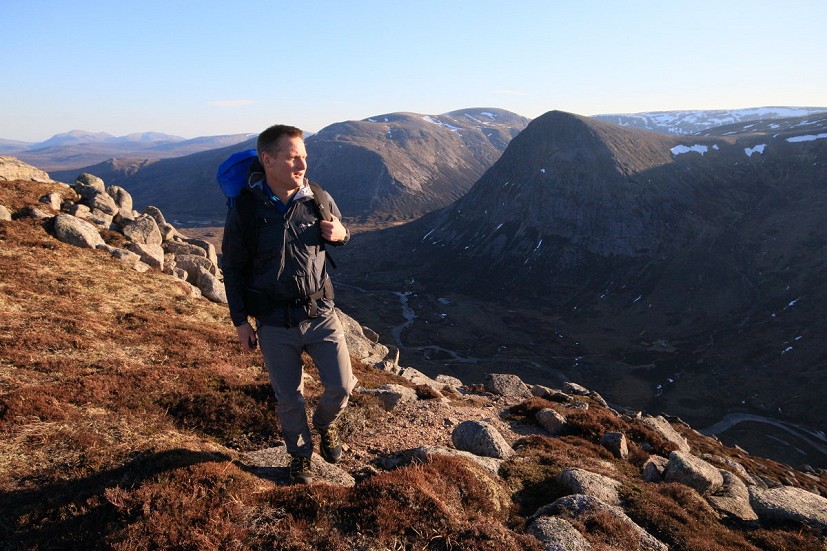
Make a gear spreadsheet
I know, I know. But if you want to keep track of every stray gram, the only way to do it is to weigh everything, and keep a spreadsheet.
Upgrade your waterproofs
Your trusty old Gore-Tex mountain shell might keep out the weather, but if it weighs half a kilo or more then this is the next area to look at. Astoundingly light waterproof garments now exist at affordable prices. It's worth noting that there are sometimes compromises with the lightest jackets, particularly with regards to long-term durability or breathability.
Some minimalist examples: Berghaus Hyper 100 (97g); Alpkit Gravitas (170g); Rab Flashpoint (185g); Marmot Essence (176g)
Some more mountain-oriented lightweight shells: Outdoor Research Realm (308g size L); Mammut Kento (365g); Arc'teryx Alpha FL (315g); Mountain Equipment Zeno (355g); Jottnar Hymir (290g)
- Nb: UKHillwalking is soon to publish a comparative review of all these models: watch this space
Switch to trail shoes
For summer backpacking, switching from heavy boots to lightweight, quick-draining running shoes is one of the best decisions I've made in this process. They wear out more quickly, but they don't overheat, I never get blisters, and the reduced weight makes a huge difference to energy levels throughout the day. For me ankle support isn't really a factor – I use mesh running shoes on the roughest mountain terrain with perfect comfort, and haven't turned an ankle in well over a thousand miles. Of course, your feet will get wet; but the shoes drain and dry quickly, so this doesn't matter as much as you might think.
Personal preference is key here. Some people will prefer to keep walking in boots, and that's fine. If you're worried about ankle support, for instance, or the possibility of injuries to the foot that could result from load carrying on rough ground for long distances in less supportive footwear, then boots may well remain the better option for you. Just make your footwear choice a considered one.
Use a tarp
A tarp in the British hills is surely madness – right? A simple flat tarp is difficult to make truly weatherproof, or remotely midge proof, but many weird and wonderful ultralight shelters exist that bridge the gap between tarps and tents. Some weigh less than 800g and provide full midge protection. Others are modular – the tarp itself is ultralight, but you have to add your own mesh inner, groundsheet or bivy bag as required. A tarp won't be every walker's cup of tea - and in prolonged rain, high winds or fierce midges many models have obvious drawbacks - but if you are looking to go light then the weight saving they can offer may make them worth considering. I've used tarps in preference to tents for several years now. Again, when making a tarp-versus-tent call, consider the conditions you are likely to encounter on a given trip.
Print your own maps
A stack of OS maps covering a long trail is heavy and bulky. Instead, print your own from a service like OS Maps or Memory Map. Waterproof paper is available, or you could always laminate them.
Saw your toothbrush in half
Just kidding!
Over to you
There has never been a better time to shed some weight from your pack. Mainstream brands are learning from the ultralight movement, and most of the outdoor kit you can buy on the high street today has been influenced by it in some way. But it isn't all about spending money. Hopefully I've shown you how mere mortals can reduce pack weight without compromising enjoyment or safety in the great outdoors.


